27 Must-Try Taiwanese Street Foods to Discover
Street foods in Taiwan represent a vibrant culinary landscape bursting with flavor, tradition, and cultural significance.
Taiwanese cuisine blends indigenous ingredients with influences from Chinese, Japanese, and local cooking styles.
Regional specialties showcase incredible diversity and creativity across different neighborhoods and markets.
Sizzling, aromatic delicacies tempt passersby with their irresistible scents and colorful presentations.
Generations of recipes passed down through families contribute to the rich gastronomic heritage of these delectable treats.
Vendors craft each dish with remarkable skill, transforming simple ingredients into extraordinary culinary experiences.
You will find yourself immersed in a world of mouthwatering sensations that capture the essence of Taiwanese street food culture.
Dive into these 27 popular Taiwanese street foods that promise an unforgettable taste adventure:
Popular Taiwanese Street Foods for Foodies
Taiwan’s night markets are a festival of smells and colors. From crispy chicken to bubble tea, every stall serves up new reasons to come back for more.
Braised Pork Rice (Lu Rou Fan)
Lu rou fan stands as Taiwan's most beloved comfort food, blending ground pork braised in a rich soy sauce and five-spice mixture over steamed white rice.
Street vendors and home cooks alike prepare this classic dish by slow-cooking minced pork until it reaches a deeply caramelized, tender consistency.
Traditional recipes incorporate soy sauce, rice wine, and fragrant spices that infuse the meat with complex layers of flavor.
Originating as a nutritious meal for farming families, lu rou fan now represents a staple in Taiwanese cuisine.
Small side dishes like pickled cucumbers or shiitake mushrooms often accompany the main plate.
Some modern variations swap rice for noodles, expanding the dish's versatility.
Restaurants throughout Taiwan serve this iconic meal from street stalls to high-end establishments.
Travelers and locals alike consider lu rou fan a quintessential Taiwanese culinary experience.
Taiwanese Popcorn Chicken
Taiwanese popcorn chicken dominates street food culture with its irresistibly crispy, bite-sized chicken pieces deep-fried to golden perfection.
Boneless chicken thighs serve as the prime ingredient, marinated in a robust blend of soy sauce, garlic, and ginger for maximum flavor intensity.
Rice wine and traditional spices like five-spice powder enhance the meat's rich taste profile.
Modern interpretations introduce innovative seasonings including seaweed, mustard, or allspice for unique flavor dimensions.
Potato or corn starch creates an ultra-crunchy exterior that seals in the chicken's juicy interior.
Street vendors across Taiwan popularized this addictive snack, making it a national culinary sensation.
Small pieces ensure easy eating and maximum crispiness with each bite.
Restaurants and night markets continue to celebrate this beloved chicken dish as a quintessential Taiwanese street food experience.
Gua Bao
Gua bao are iconic Taiwanese street sandwiches featuring succulent braised pork belly nestled inside fluffy steamed buns.
Taiwanese night markets popularized these handheld delights that blend savory and sweet flavor profiles.
Street vendors across Taiwan craft these sandwiches with tender pork belly slowly braised in soy sauce and red wine.
Five-spice powder provides deep, complex seasoning to the meat's rich texture.
Sour pickled mustard greens add tangy contrast to the fatty pork.
Chopped fresh cilantro brings bright herbal notes to each bite.
Lightly sweetened peanut powder creates a subtle nutty finish.
Generous layers of ingredients make gua bao a perfect balance of textures and flavors.
Taiwanese Scallion Pancake
Taiwanese scallion pancakes are savory flatbreads crafted from unleavened dough layered with fresh scallions and expertly pan-fried until golden and crispy.
Street vendors across Taiwan create these irresistible snacks by rolling thin dough with chopped green onions, then pressing and frying to achieve a multilayered, flaky texture.
Traditional preparation involves carefully folding and flattening the dough to create intricate, crisp layers that crackle with each bite.
Variations include deep-frying methods and additional flavor enhancements like spices or sauces.
Night markets often feature these pancakes as a popular street food, attracting locals and tourists.
Regional differences exist in preparation techniques and ingredient combinations.
Taiwan considers these pancakes a beloved comfort food with deep cultural roots.
Scallion pancakes serve as both a standalone snack and a complementary side dish in Taiwanese cuisine.
Pepper Bun (Hujiao Bing)
Hujiao bing are savory Taiwanese street food buns packed with explosive flavor and irresistible aroma.
Originating in Fuzhou, Fujian, these hand-held snacks feature a crispy exterior and juicy meat filling that bursts with spices and umami.
Street vendors carefully stuff wheat dough with marinated fatty pork and chopped scallions before baking them in traditional clay ovens.
Sesame seeds add a nutty crunch to the golden-brown surface of each bun.
Taiwanese markets and street stalls frequently sell these pepper buns as quick, satisfying meals for hungry locals and tourists.
Meat options sometimes include chicken or beef as alternative fillings.
Small family businesses often specialize in crafting these iconic pepper buns with generations of culinary expertise.
Oyster Omelette (Kezai Jian)
Oyster omelette is a savory Taiwanese street food celebrating fresh seafood and regional culinary traditions.
Originating in Chaozhou and Fujian, China, this iconic dish spread through Hokkien communities across Southeast Asia.
Small oysters blend with a crispy potato starch and egg batter, creating a unique texture that balances seafood richness and crisp edges.
Tainan, Taiwan, stands out as the ultimate destination for this delicacy, famous for its coastal access to fresh oysters.
Street vendors and night markets typically prepare this dish quickly on sizzling hot griddles.
Authentic recipes showcase the simplicity of fresh ingredients and traditional cooking techniques.
Diners enjoy this omelette as a quick, satisfying meal that reflects the maritime culinary heritage of southeastern China and Taiwan.
Ba Wan
Ba wan dominates Taiwan's street food scene as a beloved national dumpling crafted from rice flour and potato starch dough.
Stuffed with savory pork, bamboo, and mushrooms, this versatile treat can be steamed or fried to perfection.
Traditional preparation involves thoroughly steaming the dumpling and then quickly dipping it in hot oil to create a translucent, glossy skin.
Sweet and spicy sauces often accompany the dumpling, enhancing its rich flavor profile.
Ba wan appeals to all social classes, transcending culinary boundaries with its simple yet satisfying composition.
Street vendors and restaurants alike proudly serve this iconic Taiwanese specialty.
Affordable and delicious, ba wan represents the heart of Taiwan's street food culture.
Hi-Oan
Tamsui fish balls are savory Taiwanese spheres packed with marinated pork and garlic inside delicate fish paste.
Shark meat sometimes enhances their distinctive flavor profile.
Museums dedicated to these snacks showcase their rich culinary heritage, with one museum opened in 2004 highlighting their cultural significance.
Oval-shaped and featuring a chewy texture, these fish balls float in hot seasoned broth alongside rice vermicelli or dumplings.
Street vendors frequently serve them as breakfast or lunch options.
Traditional preparation involves carefully blending fish paste with select meat and aromatic ingredients.
Tourists and locals alike enjoy these flavorful morsels as a popular Taiwanese street food.
Regional recipes maintain generations-old techniques for creating these beloved bite-sized delicacies.
O-A Mi-Soa
O-a mi-soa is a beloved Taiwanese noodle dish featuring thin red misua noodles swimming in a rich, savory oyster-based broth.
Oysters anchor this traditional soup, creating a deeply satisfying seafood experience that reflects Taiwan's coastal culinary heritage.
Misua noodles absorb complex flavors from bonito flakes, minced garlic, ginger, and rice wine, transforming the simple ingredients into a nuanced meal.
Chefs thicken the broth with cornstarch, ensuring a silky texture that coats each noodle strand.
Optional braised pork intestines add depth and richness to the dish.
Black rice vinegar, soy sauce, and chili sauce provide tangy and spicy undertones that balance the oysters' brininess.
Fresh cilantro and spring onions contribute bright, aromatic garnishes that enhance the overall flavor profile.
Run Bing
Run bing showcases Taiwanese culinary creativity through delicate steamed spring rolls wrapped in thin popiah skin.
Taiwanese families craft these rolls with diverse fillings like shredded pork, vegetables, and proteins that reflect regional tastes and personal preferences.
Ingredients such as peanut powder, daikon, bean sprouts, and chicken fill the translucent crepe with complex flavors and textures.
Green garlic, cilantro, and cucumber add fresh crispness to each bite.
Lima beans, cabbage, and carrots contribute nutritional depth to the roll.
Sweet chili sauce provides a tangy accent that elevates the overall taste experience.
Dried tofu and shrimp offer additional protein variations for different palates.
Egg strips complete the roll with a subtle richness that balances the other ingredients.
Kong-Oan
Kong-Oan meatballs burst with Taiwanese street food culture, delivering an explosive blend of ground fatty pork, shiitake mushrooms, and unique bouncy textures.
Taiwanese vendors expertly craft these street snacks by mixing ground meat with tapioca starch and egg whites for superior elasticity.
Traditional preparation involves hand-pounding meat until it reaches a springy, resilient consistency that distinguishes Kong-Oan from standard meatballs.
Subtle seasonings like white pepper and soy sauce enhance the meat's natural flavors.
Shiitake mushrooms add earthy undertones to the protein-rich mixture.
Baking powder helps create the signature light, airy texture.
Street markets across Taiwan serve these meatballs hot and fresh, often skewered for convenient eating.
Generations of Taiwanese families have perfected this beloved street food through careful technique and inherited recipes.
Thih-Nng
Iron eggs are a distinctive Taiwanese delicacy known for their dark, leathery appearance and intense flavor profile originating in Tamsui District.
These unique eggs undergo a meticulous cooking process involving repeated boiling, stewing, and air-drying that transforms ordinary chicken, pigeon, or quail eggs into chewy, concentrated protein bites.
Taiwanese street vendors carefully braise the eggs in soy sauce or strong tea, often adding herbs and spices like chili or garlic to enhance their complexity.
Repeated cooking cycles create their signature tough texture and deep mahogany color that distinguishes them from standard boiled eggs.
Vendors traditionally prepare these eggs through a time-consuming method that reduces moisture and intensifies taste.
Night markets across Taiwan feature iron eggs as a popular snack that satisfies both texture and flavor preferences.
Travelers and locals alike enjoy these protein-rich delicacies as a quick, flavorful street food.
A-Gei
A-gei are iconic Taiwanese street food parcels featuring deep-fried tofu pouches stuffed with glass noodles and sealed with fish paste.
Originating in 1965 from Tamsui's famous Ah-Gei eatery, these savory treats draw their name from Japanese abuurage terminology.
Surimi fish paste inside the tofu pocket gets enhanced with a special carrot mixture for extra flavor complexity.
Soft tofu pouches absorb rich pork stew liquids, creating incredibly juicy bites.
Traditional serving styles include immersion in soy-based or sweet-sour sauces.
Chili sauce provides optional spicy kick for adventurous eaters.
Side accompaniments typically feature fish ball soup or cold soy milk.
Taiwanese street food lovers consider a-gei a perfect portable meal blending texture and taste.
Toa-Tng Pau Sio-Tng
Gua bao sausages showcase Taiwan's ingenious street food culture by nesting a smaller pork sausage inside a larger sticky rice sausage before grilling.
Street vendors grill these unique sausages until perfectly crisp and golden brown.
Night markets across Taiwan serve these handheld treats with an impressive array of toppings and condiments.
Traditional accompaniments include salted vegetables, pickled cabbage, and cucumbers.
Garlic, wasabi, and sweet chili sauce add extra zest to the sausage's flavor profile.
Thick soy sauce, peanut powder, cilantro, and basil provide additional complexity to each bite.
Taiwanese food enthusiasts consider this compact street snack a perfect balance of textures and tastes.
Grilled and served hot, these sausages represent a delicious fusion of traditional ingredients and modern street food innovation.
Turkey Rice
Turkey rice dominates Taiwanese street food with its comforting blend of shredded meat and steamed white rice.
Taiwanese families have enjoyed this straightforward dish for generations as a quick and satisfying meal.
Soft turkey pieces are carefully layered over plain boiled rice and generously drizzled with savory soy sauce drippings.
Small pieces of pickled daikon radish typically garnish the plate for added texture and tangy flavor.
Restaurant vendors across Taiwan sell this popular street food at affordable prices.
Home cooks often prepare turkey rice as a simple weeknight dinner that requires minimal cooking skills.
Soy sauce plays a crucial role in enhancing the meat's flavor and moisture.
Traditional preparation involves slowly simmering turkey until tender and easily shredded.
Ta-A-Mi
Ta-a-mi noodles ordanzi dazzle street food lovers with their complex shrimp-infused broth and signature thick Chinese wheat noodles topped with a single perfect shrimp.
Minced pork and rich pork sauce enhance the noodles' deep umami profile, creating a multilayered flavor experience.
Regional vendors guard their unique spice blends and ingredient ratios as closely guarded culinary secrets.
Small street stalls and compact restaurants specialize in serving these traditional noodles throughout Chinese urban neighborhoods.
Shrimp provides a luxurious protein highlight that elevates the entire dish.
Wheat noodles serve as the hearty foundation absorbing the intense broth.
Modest garnishes complete this street-smart snack that satisfies hunger with remarkable depth.
Tian Bu La
Tian bu la are savory Taiwanese fish cakes crafted from a blended mixture of white fish, eggs, and potato flour that get deep-fried into crispy golden cylinders or round discs.
Traditional preparation involves first frying the fish cakes until golden brown, then gently simmering them in a rich soy-sauce-based broth that softens their exterior and infuses complex flavors.
Street vendors and eateries commonly serve these snacks skewered or in bowls, often accompanied by a sticky brown sauce combining chili paste, soy sauce, miso, and sugar.
Taiwanese culinary traditions often feature these fish cakes alongside other deep-fried treats like fish balls and tofu.
Variations in shape range from long thin cylinders to thick round discs.
Texture transforms from crispy to tender through boiling.
Ingredients blend seamlessly to create a popular street food staple.
Ti-Huih-Ko
Ti-huih-ko offers a shocking Taiwanese street food experience with pig's blood and sticky rice crafted into a distinctive savory-sweet treat.
Blood coating rice creates a unique texture resembling a meaty popsicle that surprises street food adventurers.
Taiwanese vendors steam or fry the blood-rice mixture for maximum flavor intensity.
Chefs baste the creation in a slightly sweet pork soy broth that enhances its complex taste profile.
Peanut flour provides a crunchy exterior coating that adds textural contrast to the soft inner core.
Coriander garnish introduces a fresh herbal note to balance the rich meat flavors.
Street markets frequently showcase this daring dish as a testament to creative Taiwanese culinary traditions.
Curious eaters find this unconventional snack both challenging and surprisingly delicious.
Ian-Chhiang
Ian-chhiang sausages burst with intense flavors from Taiwan's street food culture, representing a complex blend of fatty pork, garlic, and traditional spices.
Taiwanese night markets showcase these air-dried sausages as a popular snack prepared through grilling, pan-frying, or baking methods.
Makers craft the sausage using a precise mixture of pork, rice wine, soy sauce, five-spice blend, sugar, salt, and black pepper.
Optional ingredients like chili powder and red pepper enhance its robust taste profile.
Sorghum wine can substitute rice wine for additional depth.
Authentic preparation includes serving the sausage with raw garlic slices.
Street vendors carefully season and dry these meaty treats.
Sian-Hi I-Mi
Sian-hi i-mi represents a beloved Taiwanese street snack combining crispy swamp eels with chewy egg noodles in a savory brown sauce or thick soup.
Swamp eels form the core protein, carefully stir-fried and seasoned with black rice vinegar and soy sauce for deep flavor complexity.
Taiwanese vendors traditionally prepare this dish quickly in street-side stalls, creating a fast and satisfying meal for hungry locals.
Egg noodles provide textural contrast against the tender, crispy eel pieces.
Vinegar and soy sauce infuse each bite with sharp, umami-rich notes that define the dish's character.
Region-specific cooking techniques ensure authentic preparation methods passed through generations.
Salt and specific seasonings enhance the broth's depth and richness.
Small regional variations exist across different Taiwanese neighborhoods, reflecting local ingredient availability and family traditions.
Sishen Soup
Sishen soup is a legendary Chinese herbal soup steeped in imperial history and medicinal tradition, crafted from pig stomach, lean pork, and carefully selected herbs like Chinese wild yam, white lotus seeds, Euryale seeds, and poria.
Emperor Qianlong's court first popularized this nutritious broth when a monk recommended it to four ministers as a healing remedy.
Historical accounts suggest the soup's name originated from a misreading of "si chen tang" (four minister soup) as "sishen tang" during its spread to Taiwan.
Ancient Chinese medicine believed these specific herbs possessed unique healing properties that could restore balance and strengthen the body.
Generations of families have simmered these ingredients in water or pork stock, creating a deeply nourishing meal.
Traditional preparation involves slowly cooking the ingredients to extract maximum flavor and medicinal benefits.
Medical practitioners continue to recommend sishen soup for its potential health-boosting qualities.
Braised Congo Eel
Braised congo eel represents a savory Taiwanese seafood specialty featuring tender conger eel pieces expertly fried and slowly braised in a rich, flavorful liquid.
Taiwanese night markets frequently serve this popular street food alongside delicate noodles and fresh chopped coriander.
Chefs carefully select high-quality eel for its distinctive texture and deep umami flavor profile.
Regional cooking techniques transform the fish into a mouthwatering dish that highlights maritime culinary traditions.
Consumers enjoy the complex preparation method that involves initial frying and subsequent braising.
Salt and specific spices enhance the eel's natural taste during cooking.
Regional ingredients contribute to its unique character and widespread popularity.
Traditional preparation methods ensure each bite delivers maximum flavor intensity.
Shuangbaotai
Shuangbaotai are classic Taiwanese twin-connected fried dough pastries crafted from simple wheat flour dough.
Twin golden-brown dough balls fuse together during deep-frying, creating a crispy exterior with soft, chewy interiors.
Street vendors across Taiwan frequently prepare these traditional xiaochi snacks by carefully connecting two small dough balls before submerging them in hot oil.
Traditional preparation involves hand-stretching and carefully joining dough portions.
Taiwanese markets and street stalls showcase these treats as quick, affordable breakfast or snack options.
Locals enjoy shuangbaotai fresh and hot, often paired with morning beverages.
Tourists and residents alike appreciate these simple yet satisfying street food gems.
Jiu-Hi Ke
Jiu-hi ke are savory Taiwanese soup delicacies featuring tender cuttlefish simmered in thick geng broth.
Hakka culinary traditions transform fresh cuttlefish into delicate strips or fish paste balls swimming in a rich starch-thickened base.
Rice wine and bonito flakes infuse deep maritime flavors into this warming winter dish.
Bamboo shoots, carrots, wood ear mushrooms, and chopped daikon add complex textures and earthy undertones.
Cornstarch or potato starch creates a silky, substantial consistency that clings to each seafood morsel.
Night markets across Taiwan showcase these comforting bowls during cold weather seasons.
Small fishing communities originally developed this hearty soup as a nutritious meal.
Winter temperatures inspire locals to enjoy steaming portions of this maritime specialty.
Koa-Chha-Pan
Koa-chha-pan or coffin board delivers a unique Taiwanese street food experience with a bread bowl packed with creamy, savory fillings.
Originating in the 1940s, this distinctive dish transforms a thick white bread slice into a crispy vessel for hearty soups and stews.
Traditional recipes feature chicken meat, gizzards, carrots, green peas, and corn kernels blended with rich bechamel sauce.
Modern variations expand the filling possibilities to include diverse ingredients like curries, seafood, mushrooms, and unexpected fruits such as pineapples and mangos.
Taiwanese street vendors popularized this creative bread bowl, turning a simple concept into a culinary sensation.
Street food enthusiasts praise its innovative design and satisfying combination of textures.
Crispy bread and creamy fillings create a memorable eating experience that continues to delight locals and travelers.
Versatility remains the hallmark of this inventive Taiwanese street food.
Ding Bian Cuo
Ding bian cuo represents a unique Taiwanese street food featuring rice flour batter cooked directly along hot wok edges in a flavorful seafood and meat soup.
Keelung City originated this distinctive noodle-like dish where thin flour layers steam and crisp against wok sides before being scraped into the bubbling broth.
Skilled cooks carefully spread rice flour mixture around the wok's interior, creating delicate, slightly crispy edges that absorb the rich soup's flavors.
Seafood and meat provide hearty protein elements that complement the light, stretchy flour panels.
Texture contrasts make this dish especially appealing, with soft noodle-like strips and crisp edges blending in each spoonful.
Local markets and street vendors frequently prepare ding bian cuo using traditional techniques passed through generations.
Regional ingredients like fresh fish, shrimp, and pork typically form the soup's base.
Alivongvong
Alivongvong is a traditional Taiwanese aboriginal dumpling wrapped in a delicate pandan leaf basket, originating from the Amis people.
Native cooks carefully craft small leaf containers filled with steamed white and black rice and savory ingredients like pork, wild boar, or fish and mushrooms.
Steaming transforms the compact package, infusing the rice with a distinctive pandan fragrance and rich flavor.
This portable meal serves as a convenient lunchbox alternative for travelers and workers.
Zongzi-style preparation ensures the dumpling remains moist and flavorful.
Indigenous cooking techniques highlight the Amis culinary creativity.
Leaf-wrapping protects the inner ingredients during cooking.
Small baskets demonstrate intricate handmade skills passed through generations.
Why Are Night Markets Considered a Cultural Treasure in Taiwan?
Taiwan’s night markets are lively centers of food, culture, and social life, truly treasured by locals and visitors alike. They offer an amazing range of local snacks and dishes that highlight Taiwan’s rich culinary traditions.
But night markets are more than just places to eat - they’re vibrant gathering spots where people come together, creating a strong sense of community.
Known for being both affordable and authentic, these markets serve up street food made with traditional recipes and time-honored cooking methods. Beyond the delicious flavors, night markets also buzz with games, shopping stalls, and live performances that showcase Taiwan’s lively culture. Altogether, they capture the heart and spirit of everyday Taiwanese life in a fun, flavorful way.
Can You Get Breakfast Street Food in Taiwan Too?
Yes! While night markets are famous, Taiwan’s street food scene starts early with a variety of breakfast offerings:
Taiwan’s breakfast street food is as diverse and flavorful as its famous night markets, offering delicious ways to start the day.

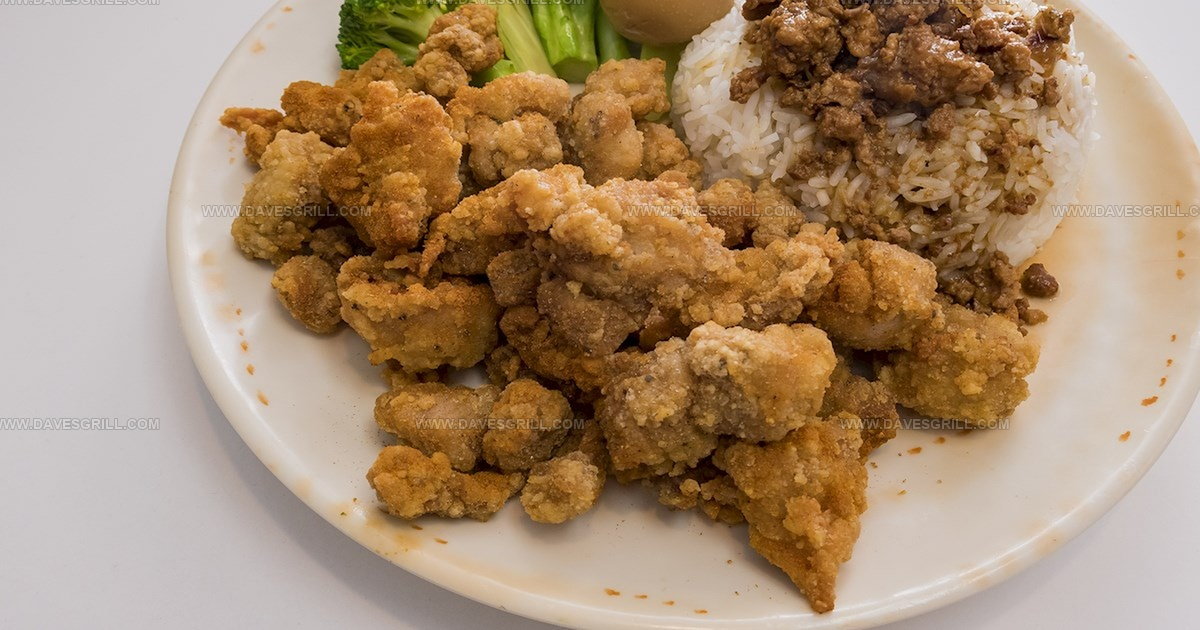

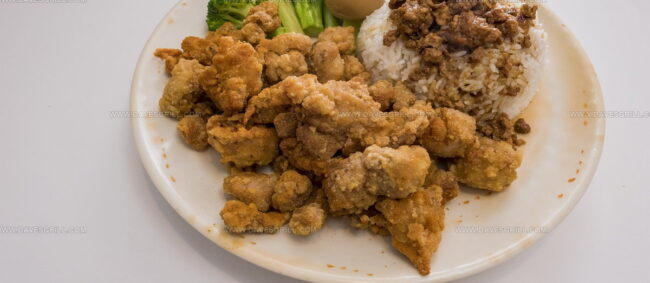
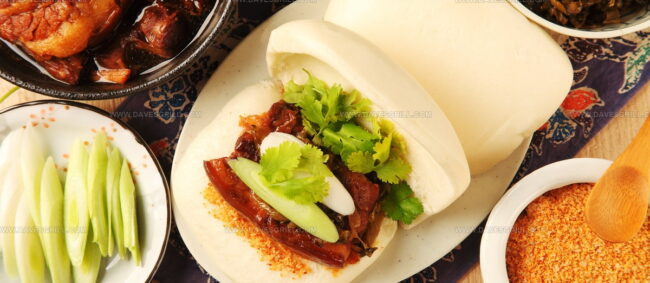
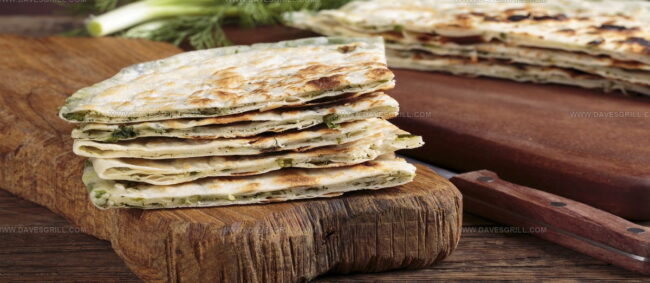
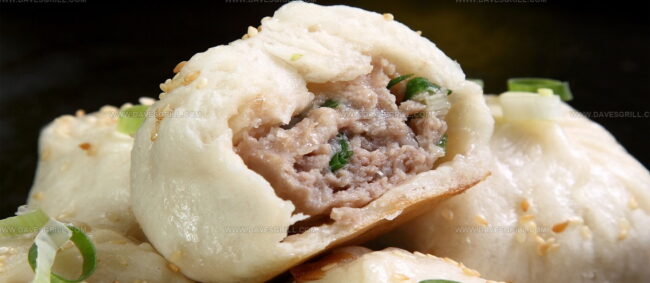
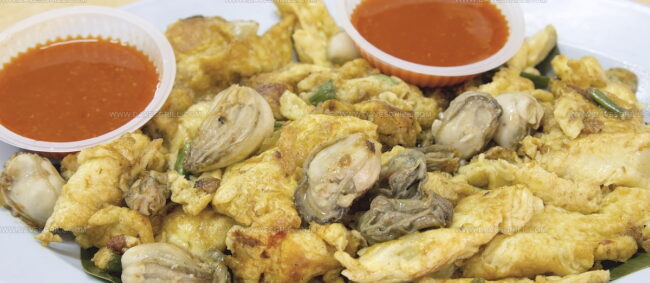
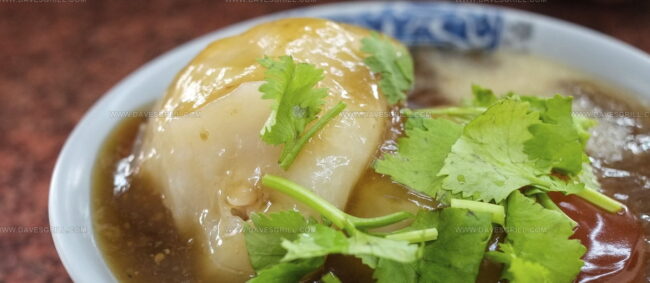
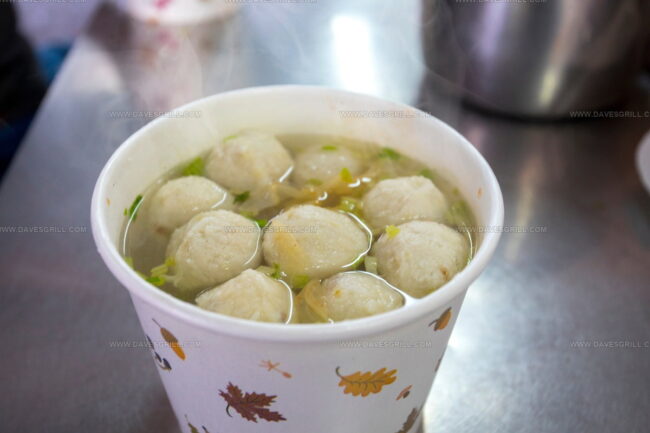
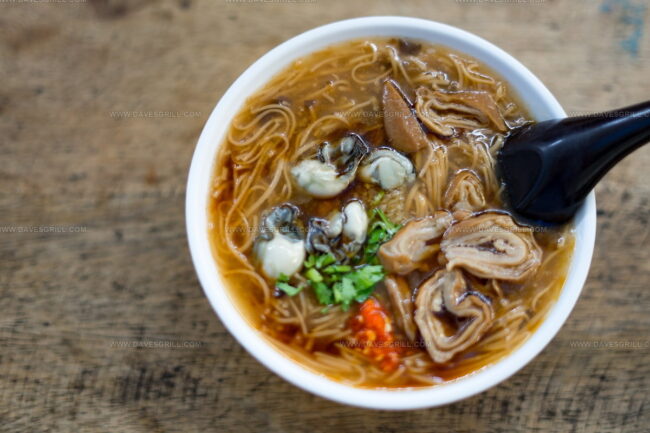
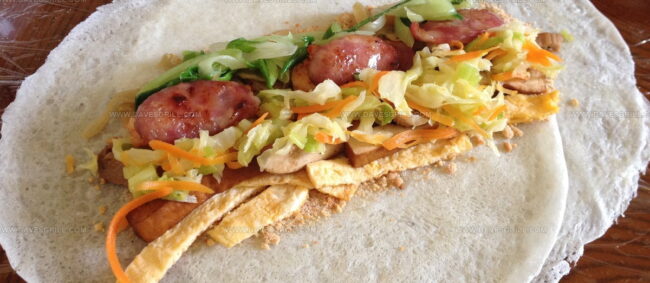
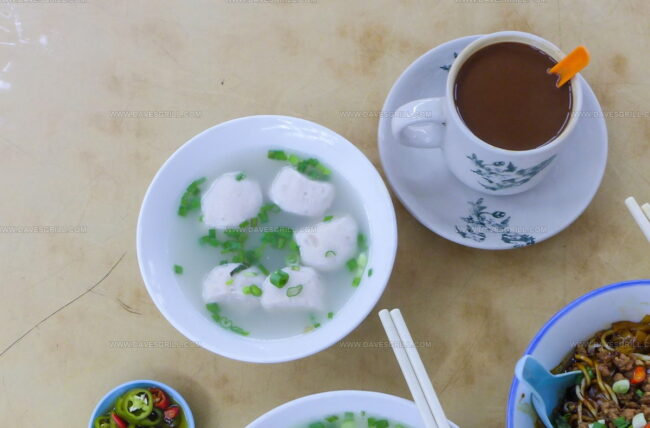

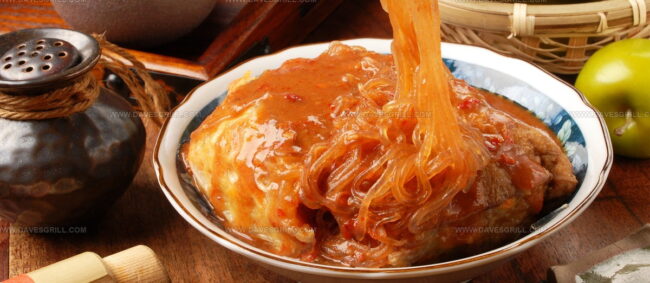

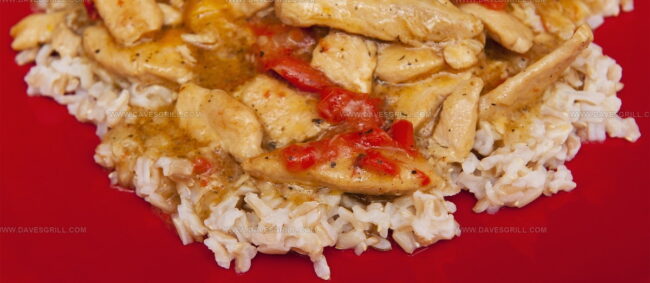
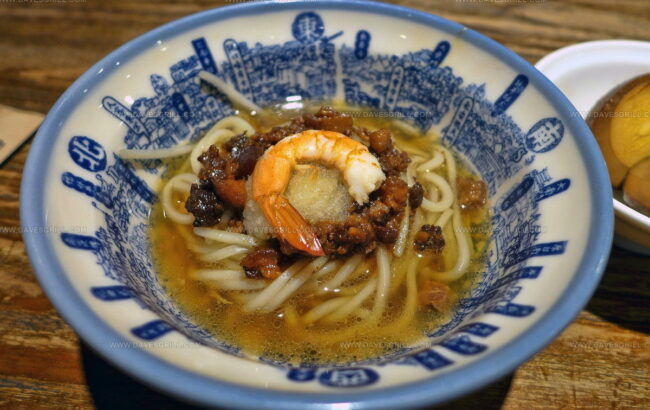
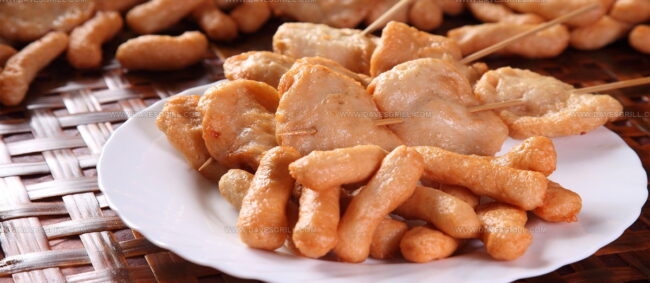
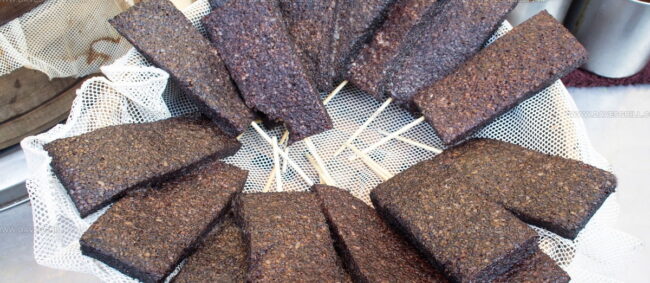
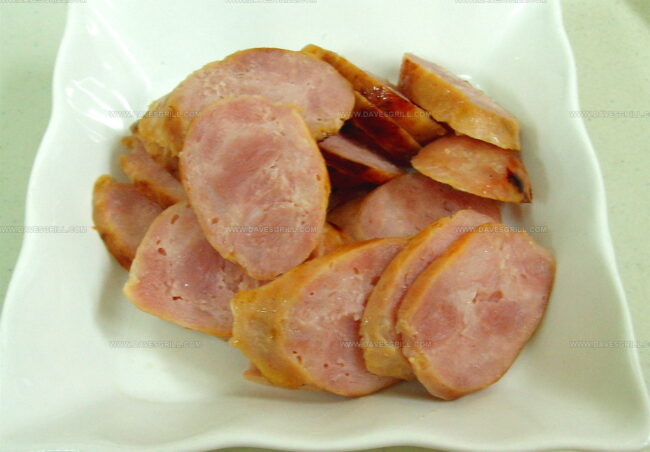
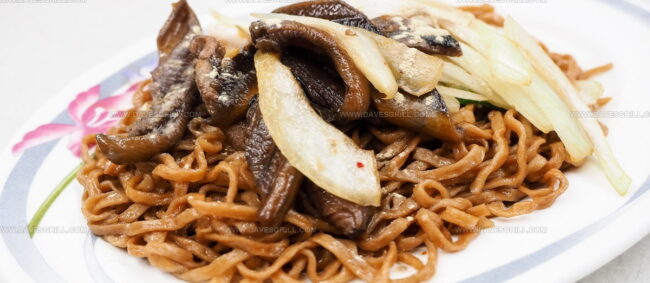
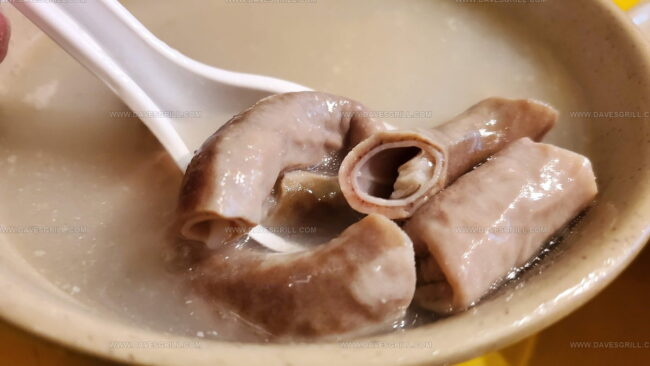
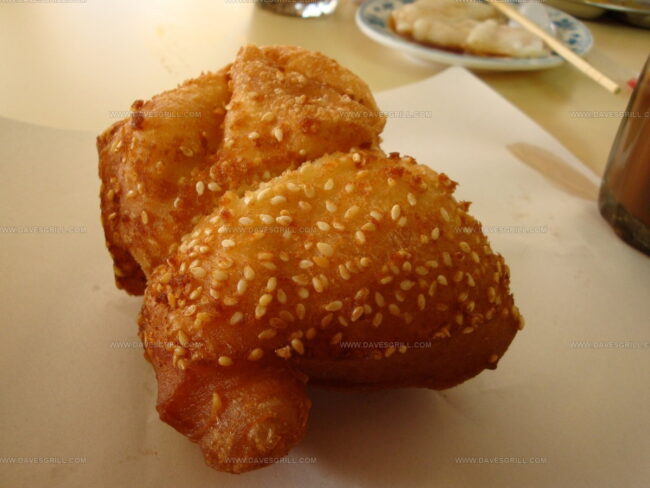
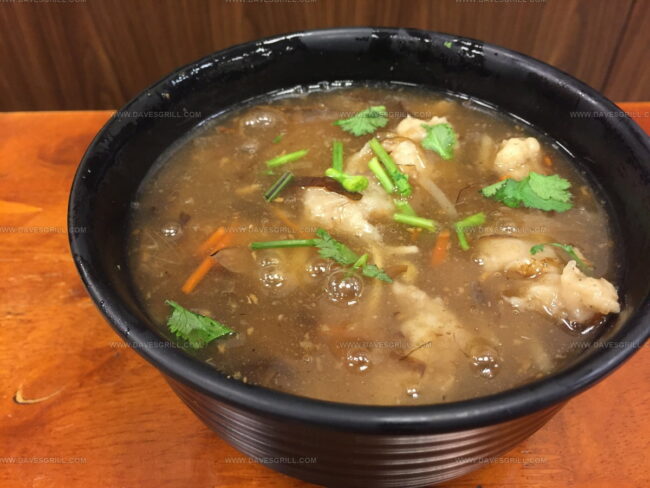
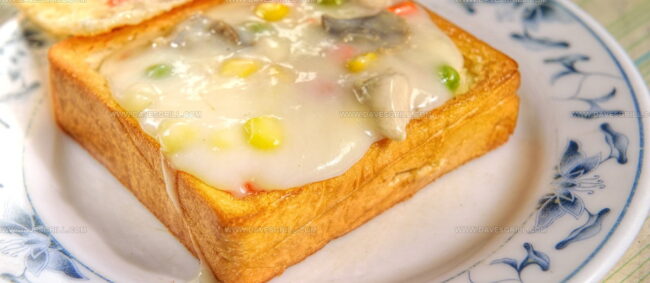
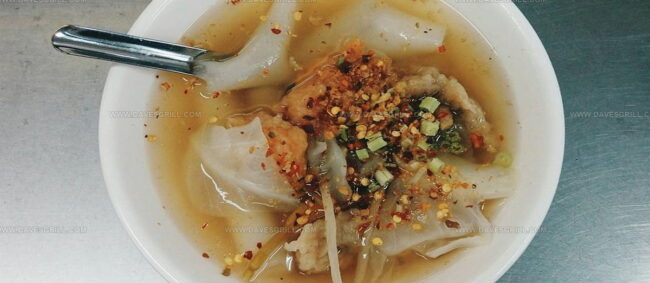
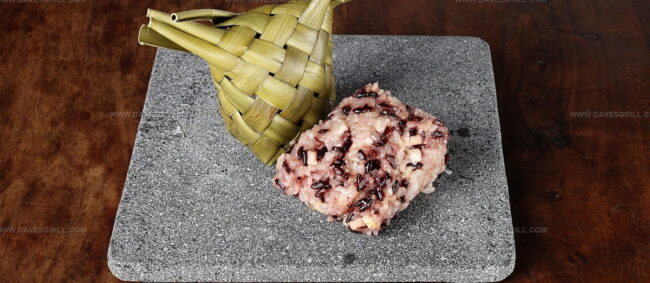
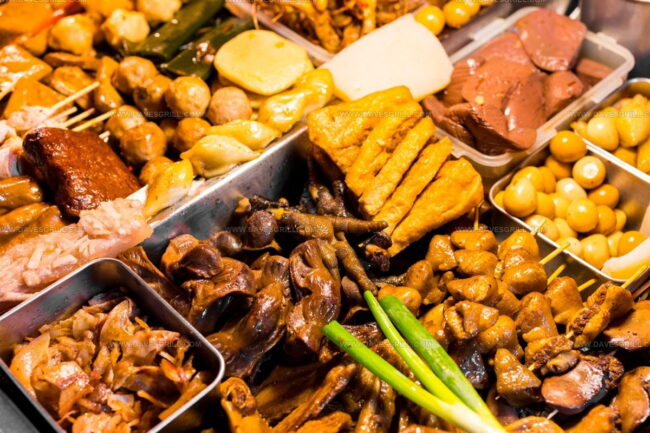

Dave Mitchell
Founder & Chief Recipe Developer
Expertise
Education
Asheville-Buncombe Technical Community College
Associate of Applied Science in Culinary Arts
Focus: Comprehensive training in culinary techniques, kitchen management, and menu planning, with a special emphasis on grilling and outdoor cooking.
Dave Mitchell is the heart behind Daves Grill, a cook, writer, and lover of all things grilled. He studied Culinary Arts at Asheville-Buncombe Technical Community College and spent years cooking, testing, and sharing recipes that actually work.
Dave started Daves Grill to keep things simple: one great recipe at a time. His food is bold, easy to follow, and made for real people with regular kitchens. From juicy steaks to quick sides, Dave’s recipes bring the heat without the hassle.